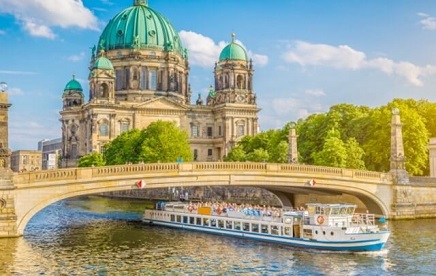 LONDON—The World Travel & Tourism Council (WTTC) and the Saudi-based Sustainable Tourism Global Center have unveiled groundbreaking new data detailing the climate footprint of the Travel & Tourism sector in Germany.
LONDON—The World Travel & Tourism Council (WTTC) and the Saudi-based Sustainable Tourism Global Center have unveiled groundbreaking new data detailing the climate footprint of the Travel & Tourism sector in Germany.
In one of the largest research projects of its kind, WTTC can for the first time ever, accurately report and track the impact the sector has on the environment.
According to this groundbreaking new data, Germany is one of just a few major countries where Travel & Tourism has continued to grow, whilst reducing its absolute emissions.
In 2019, the sector was responsible for 10.3 percent of total greenhouse gas emissions across Germany.
This dropped more than four percentage points, to reach 5.9 percent in 2020 and 5.8 percent in 2021, mainly due to the reduced activity in the sector during the pandemic period.
Growth No Longer Meant More Emissions
Between 2010 and 2019, Germany’s Travel & Tourism sector decoupled its greenhouse gas emissions from its growth.
During this period, greenhouse gas emissions decreased on average by 1.1 percent per year, while Travel & Tourism’s total contribution to Germany’s economy grew 1.5 percent on average annually.
The figures also show that the sector’s emissions intensity continues to decrease. In 2010, for every €1 generated by Travel & Tourism in Germany, the sector emitted 0.55 kg of greenhouse gas emissions.
In 2019, when Travel & Tourism was at its peak, this figure dropped by 22 percent to 0.43 kg per €1 created, and continued to fall in the following years, to a low of 0.36 kg per €1 in 2021.
This significant decline illustrates the impact of changes implemented by the German government and business leaders to create a more sustainable sector.
Julia Simpson, WTTC President & CEO, said: “Our data shows that Germany is one of the few Travel & Tourism powerhouses which is decreasing its absolute emissions while continuing to grow year-on-year. The Travel & Tourism sector has decoupled its economic growth from its greenhouse gas emissions and continues to reduce its emissions intensity, but we know there is still work to be done. To reach our goals and ambitions, we must take bigger and bolder steps to reduce our absolute emissions.
“We need government support in accelerating the production of Sustainable Aviation Fuels which will have a significant impact on our footprint, as well as bringing in more renewable energy to our national grids,” Simpson added.
Energy Usage
The global tourism body also provides insights on the sector’s energy usage and efficiency, and shows that between 2010 and 2019, the sector’s total energy usage increased by only 0.2 percent annually.
This demonstrates that while Travel & Tourism continued to grow, it also became more energy efficient.
Between 2019 and 2021, the sector has reduced its energy intensity by 18.3 percent, highlighting the strides made by Travel & Tourism to slash energy usage.
This comprehensive research covers 185 countries across all regions and will be updated each year with the latest figures.
This research was made possible thanks to the partnership between WTTC and the Saudi-based Sustainable Tourism Global Center. Under the Saudi green plan, more than 60 initiatives have been launched in the past year, representing more than $186 billion of investment in the green economy.







